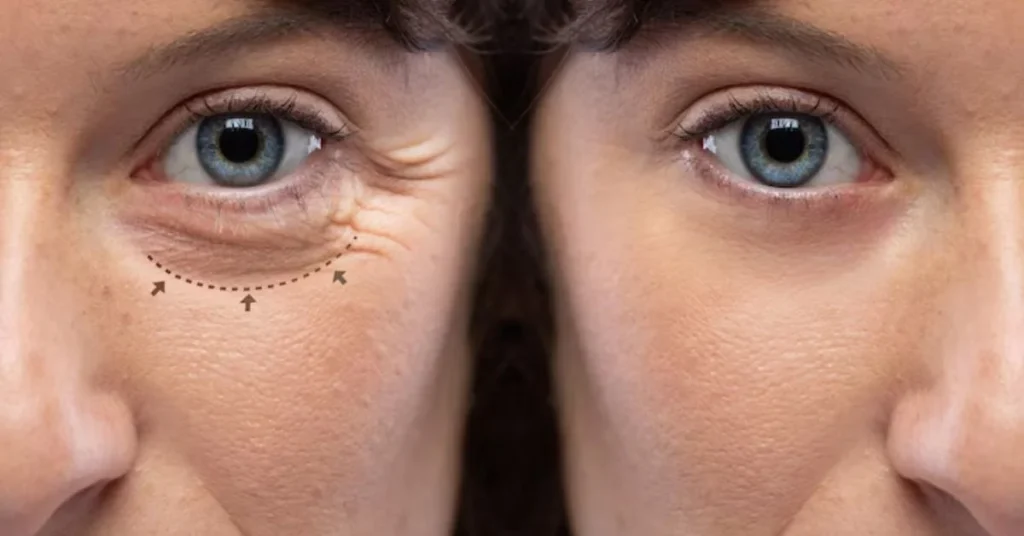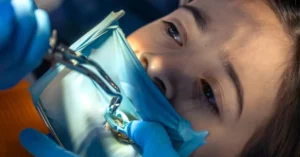Feeling weary all the time due to drooping eyelids or swollen eyes? Eyelid surgery, or blepharoplasty, might be the answer you’ve been seeking. Blepharoplasty is a treatment that may greatly enhance one’s look and eyesight. This guide will walk you through the process, from preparation to recovery, as well as the ins and outs of the operation. All the information you need will be provided to you with the support of genuine patient tales and professional guidance.
What Is Blepharoplasty?
Blepharoplasty, or the removal of extra skin, fat, and muscle from the upper or lower eyelids, is a surgical procedure that can be done for cosmetic reasons or as a medical necessity.
There are two primary types:
- Upper Eyelid Surgery – Treats drooping eyelids that may impair vision or aesthetics.
- Lower Eyelid Surgery – Focuses on under-eye bags, puffiness, and wrinkled skin.
Types of Blepharoplasty Procedures
| Type | Focus Area | Primary Purpose |
| Upper Blepharoplasty | Upper eyelids | Lift drooping skin, improve vision & appearance |
| Lower Blepharoplasty | Under-eye area | Remove fat bags, tighten skin |
| Double Eyelid Surgery | Asian blepharoplasty | Create a visible upper eyelid crease |
| Transconjunctival Method | Inside lower eyelid | Scar-free fat removal without skin incision |
Who Is an Ideal Candidate for Eyelid Surgery?
You may be a good candidate if you:
- Have droopy, hooded eyelids
- Suffer from puffy under-eye bags
- Have impaired vision from sagging skin
- Are in good health (no uncontrolled conditions)
- Don’t smoke or can quit before surgery
- Have realistic expectations
Many patients say their results make them look 5–10 years younger.
Before Blepharoplasty: Preparing for Surgery
Preparation is key to achieving optimal before and after results.
Pre-Surgical Steps:
- Consult with a board-certified plastic surgeon
- Stop smoking and avoid blood-thinners
- Take photos for before/after comparison
- Arrange transportation and post-op care
- Review your medical history and eye health
Tip: Ask to see your surgeon’s portfolio of blepharoplasty before and after images.

The Procedure: What Happens During Surgery
Most blepharoplasty procedures are outpatient and performed under local anesthesia with sedation or general anesthesia.
Step-by-Step Overview:
- Incisions are made along natural creases or inside the eyelid
- Excess skin and fat are removed or repositioned
- Incisions are closed with fine sutures
- Recovery begins immediately after surgery
Procedure time ranges from 45 minutes to 2 hours, depending on complexity.
Blepharoplasty Recovery Timeline: What to Expect
Recovery is generally smooth, with minimal downtime.
Week-by-Week Timeline:
| Timeline | What to Expect |
| Day 1-3 | Swelling, bruising, mild discomfort |
| Day 4-7 | Stitches removed, initial results visible |
| Week 2-3 | Most bruising fades, return to normal activities |
| Week 4-6 | Final results become clearer |
| 3 Months+ | Full healing and scar maturation |
Cold compresses, head elevation, and gentle care accelerate healing.
Blepharoplasty Before and After Results
The most satisfying aspect of this procedure is the visible difference it makes.
Common Before Issues:
- Tired-looking eyes
- Vision obstruction
- Under-eye puffiness
- Uneven upper lids
Common After Results:
- Brighter, more youthful eyes
- Clearer vision
- Smoother, tighter skin
- Improved facial symmetry
Visual Example (Descriptive Format)
Before:
- Hooded upper lids covering lashes
- Deep under-eye bags
- Wrinkled and sagging skin
After:
- Defined eyelid crease
- Smooth under-eye contour
- Alert, rested appearance
Real Patient Stories and Case Studies
Case 1: Amanda, 47
Issue: Puffy eyes and sagging lids affecting work confidence
Outcome: After upper and lower blepharoplasty, she returned to work in 2 weeks and received compliments on her “glow-up.”
Case 2: Henry, 62
Issue: Vision impaired by sagging upper lids
Outcome: Upper blepharoplasty improved his vision, and insurance covered it due to the medical necessity.
Benefits of Blepharoplasty
- Boosted self-confidence
- Enhanced facial aesthetics
- Improved vision (in some cases)
- Long-lasting results
- Minimal scarring when performed correctly
Most patients say it’s one of the best decisions they’ve made for themselves.
Risks and Potential Complications
As with any surgery, risks exist but are rare when performed by a qualified surgeon.
Possible Risks:
- Infection or bleeding
- Dry eyes or temporary irritation
- Asymmetry or under/overcorrection
- Visible scars
- Reaction to anesthesia
Always follow your surgeon’s aftercare instructions to minimize risks.
How to Choose the Right Surgeon
Don’t choose based on price alone. Look for:
- Board-certified plastic or oculoplastic surgeons
- Positive reviews and referrals
- Extensive before/after galleries
- Transparent consultation process
- In-person or virtual evaluation
Trust and communication are key. Ask questions and ensure you feel heard.
Cost of Blepharoplasty and Financing Options
Average Costs:
| Procedure Type | Price Range (USD) |
| Upper Blepharoplasty | $3,000 – $4,500 |
| Lower Blepharoplasty | $4,000 – $6,000 |
| Combo (Upper & Lower) | $6,500 – $9,000 |
Insurance Tip: If eyelid droop impairs vision, insurance may cover part of the cost. A vision test or eye exam is usually required.
Financing Options:
- Monthly installment plans
- Healthcare credit cards (CareCredit, Alphaeon)
- HSAs or FSAs (for medically necessary cases)
Conclusion
Now is the perfect moment to learn more about blepharoplasty if you’ve been dealing with puffy under-eye bags, drooping lids, or tired-looking eyes. Blepharoplasty is a simple but effective procedure, and seeing the before and after pictures helps emphasize the extent of the change that is achievable.
FAQs
1. How long do blepharoplasty results last?
Upper eyelid results often last 5–10 years, while lower eyelid surgery results can be permanent.
2. Will there be visible scars?
Scars are typically hidden in natural eyelid creases or inside the lower lid and fade significantly over time.
3. Can I wear makeup after surgery?
Wait at least 10–14 days post-op before applying makeup near the eyes to avoid irritation or infection.
4. Is the procedure painful?
Most patients report mild discomfort, not pain. Prescription pain relief is rarely needed beyond a few days.
5. When can I go back to work?
Most people return to non-physical work within 7–10 days after surgery.
For more information, click here.









